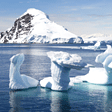- Home >
- Our Actions >
- Ambassador report
2
Comments
Wetland and water in Nepal |
|---|
|
by Prayash Pathak (Chalise) | 22-03-2018 18:22
|
|
Firstly I would like to apologize for being a little late in publishing my reports. I was out of my home town for some days and had no connection to the internet. And also, I would like to give a warm welcome to all of our new and old ambassadors as well as our new mentors. Wetland is basically defined as an area or a part of land or swamps containing much soil moisture, almost in an abundant amount. Wetlands may be artificial or natural, either permanent or temporary marsh, peat land or water that may be stagnant or flowing, fresh or salty but the depth of water does not exceed more than 6 meters. Nepal is a rich country in terms of water and wetland resources. Wetland covers about 743, 500 hectares of areas which is nearly 5% of the area of the country. The terai part consist of largest number of wetlands i.e. 163 followed by hills and mountains i.e. 72. Nepal is blessed with 20 types of wetland among the 27 recognized wetland types. Some of the famous ramsar site ( wetland in Nepali) are Koshi Tappu in Sunsari, Beeshazari in Chitwan, Ghodaghodi in Kailali, Gokyo in Solukhumbu, Gosaikunda in Rasuwa, Jagadishpur in Kapilbastu, Maipokhari in Illam, Phoksundo in Dolpa and Rara Lake in Mugu. Wetlands have a great importance in conservation of biodiversity and genetic resources. It has following noted ecological functions: purification of water, ground water recharge, nutrient retention, ecosystem maintenance, storage of water, minimization of flood and erosion. Many economic activities like fishing, irrigation, religious and cultural are also dependent in wetlands. Wetlands and riparian zones reduce nonpoint source pollution by filtering out of solution NPS-related contaminants such as phosphorus and nitrogen. The ability of wetlands and riparian zones to perform this function is determined by the vegetative composition, geochemistry, and faunal species composition. Any changes to these characteristics could affect filtering capacities. The ability of a wetland to act as a sink for phosphorus and the ability to convert nitrate to nitrogen gas through denitrification are two examples of the important functions performed by wetlands. But nowadays wetlands are becoming threat of our activities. Our major activities causing wetland impairment are : hydrological alteration of wetlands, industrialization, mining, atmospheric pollutant deposition, agriculture, timber harvest, urbanization, encroachment/landfill and many more. Political instability and weak legislative actions are also being a major threats to wetlands of Nepal. Such alterations can affect the ability of the wetland or riparian area to act as a filter for excess sedimentation and nutrients, which can result in deteriorated surface water quality. Ultimately, it causes wetland pollution. Some ways to protect our wetland from pollution cab be as follows: protection and restoration of existing wetlands and riparian areas and engineered vegetation treatment systems. We can work by reestablishing previous hydrologic dynamics, vegetation, and structural characteristics. We can maintain the water quality benefits of wetlands and riparian areas and to ensure that they do not in turn become a source of nonpoint pollution due to degradation. Vegetated filter strips can be used to remove sediment and other pollutants from runoff and wastewater by filtration, deposition, infiltration, absorption, adsorption, decomposition, and volatilization, thereby reducing the amount of pollution entering adjacent water bodies.
|
|
|










 Previous : Doing something for a change
Previous : Doing something for a change









2 Comments
Hello prayash
I hope you are doing well
Thank you so much for this report
Green cheers
Regards
Asmita Gaire
Posted 12-05-2020 18:48
Hello Prayash, thanks for the greetings!
This report makes us think over the wetland problem in various view points. It not only covers causes from industrialization wastes but even to the point of instability and weak legislative actions. Also, it even provides good solutions concerning the issue that we are facing. I hope more effort will be done to save wetlands from further destruction!
Thanks for the well written report :)
Posted 23-03-2018 22:50